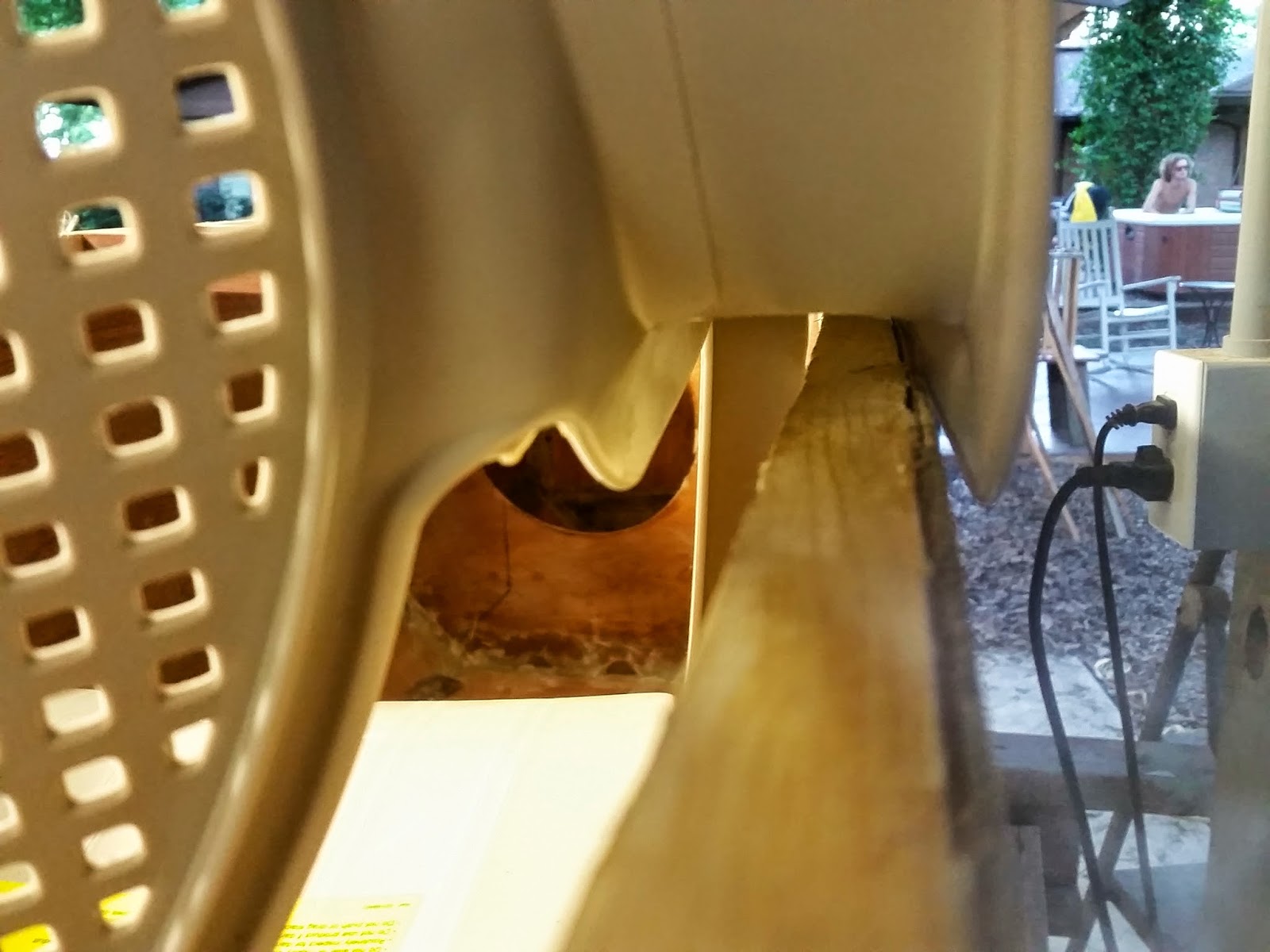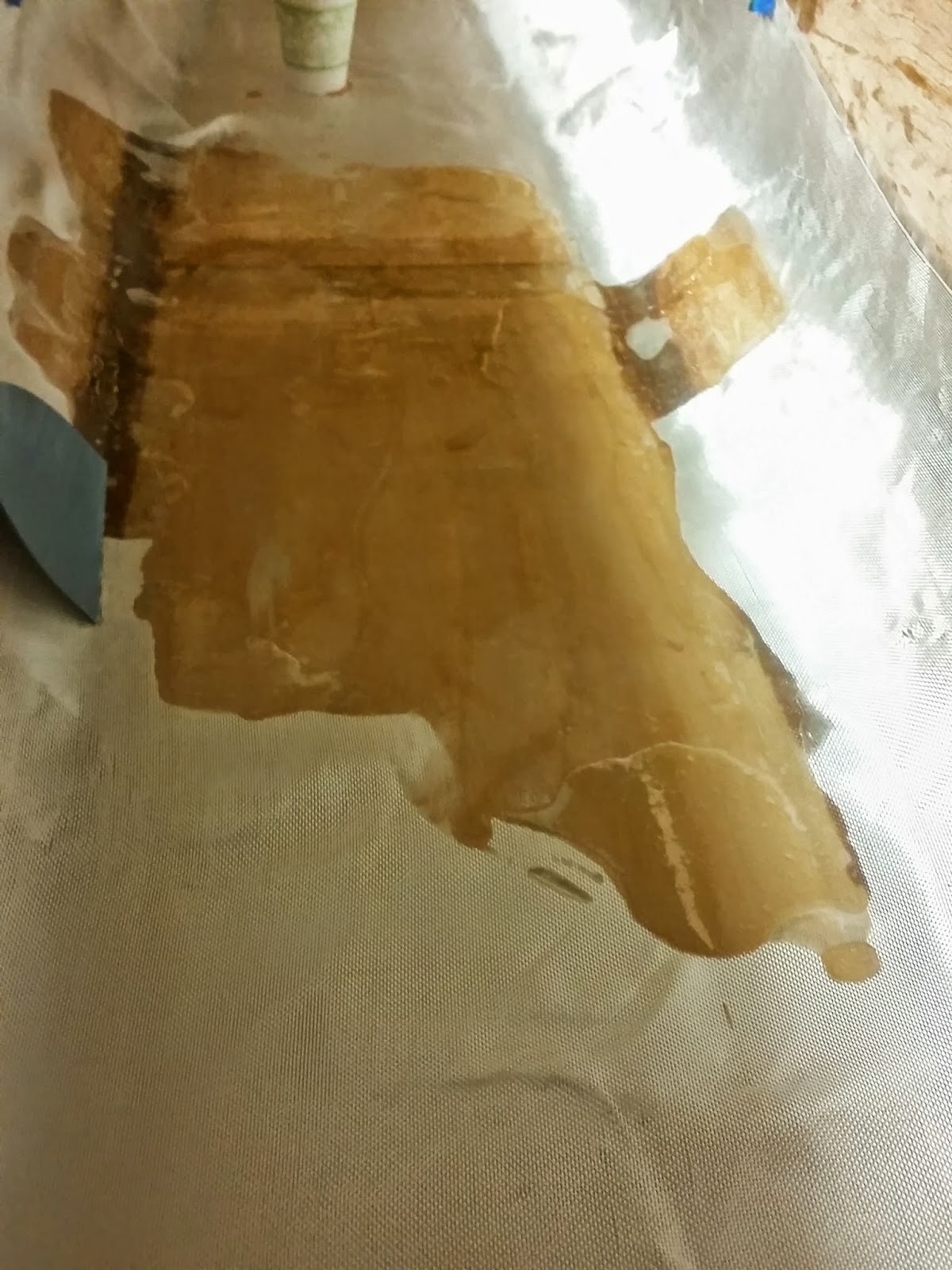Here is an example of where I think PL construction adhesive is superior to epoxy. Here is the stempost buried in a bed of PL. It is sticky right away, can be squirted in via the tube, does not run, and hardens pretty quick.
There is anecdotal evidence that PL will, sometime in the future, just fail on you. BAM.. Out of the blue. Bluster from the old gaurd? Perhaps, but there are times when epoxy or thickened epoxy are a better choice. Just not here.
Here is another example of a place that is better off having PL rather than epoxy. This is the nose of the boat. 2 raLw naked pieces of plywood, coming together at the front of the boat, needing a good, sticky join. PL gives you that. In today's Duckworks, Dave Lucas references a guy who is proudly building a big boat and boasts of using only PL.
Look carefully here at the transom. See the left fillet? Pretty smooth, all things considered, for a fillet. But look at the right side. If you could zoom down and look, you would see what a cluster F... that fillet is. Probably could have been solved by better cleanup, but, when your doing alot of area, it can be alot.
Ask yourself......What would you want to squirt in here.......PL, of course.
Loof the the left rail, where the chine meets the plywood. See the gapage, where the glue somehow pulled away during drying? Now, I could try the fill the voids with epoxy, but here, I think, I should have used epoxy....and clamps. Lots of them. Maybe PL would have done the job, with more clamps. As it was, I secured all along the ply/chine rail join, with air staples. But, I think that was not enough. It may well be that PL can be as good as epoxy, but both need clamping pressure for best results.
Here is a clear example of the gets everywhere thing that PL does. This is an inside corner. Still looks like that now, but can't be seen, because its.....an inside corner. Can't be seen, but is also hard to take a chisel to.
Here is an example of where a chisel is the right tool for the right job. See those hardened bits of hardened PL? Those chisel of rather nicely.
This is just a random cool picutre of the almost 3 foot plane that was given to me by a 94 yr old retired carpenter. See that wood peeling up from the blade. This is an action shot.
Here is a good shot of the wood shaper. Technically, it is a Rigid Oscillating edge belt/spindle sander. I think it is way, way, way, way.. better than a belt sander. Except you can hold a belt sander up to a boat, can't do that with a wood shaper.
In conclusion. epoxy is probably better for fillets, a tie for joining pieces, and where you need gobs of goo, PL wins.

















































